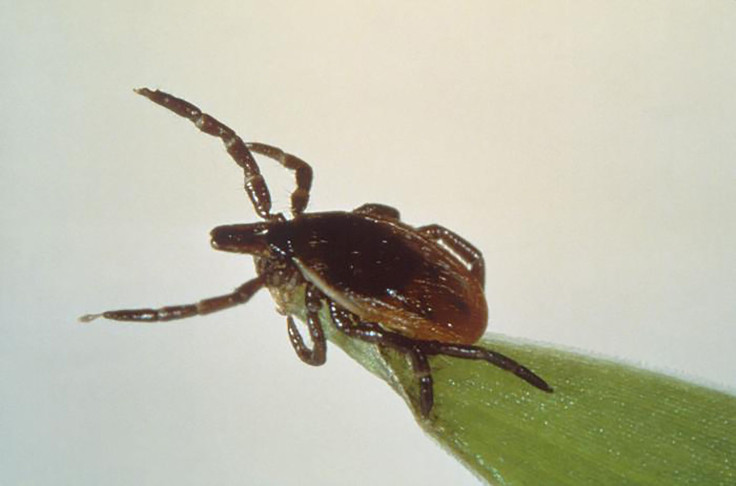Lyme Disease Symptoms, Prevention: Tick-Borne Disease On The Rise This Summer

Tick-borne diseases are on the rise this summer with health officials being concerned about Lyme disease — a bacterial infection that spreads to humans through infected blacklegged ticks, also known as deer ticks. Lyme disease season is at its peak from April through September.
According to the Centers for Disease Control and Prevention, about 30,000 cases of Lyme disease are reported every year. Lyme disease is caused by the bacterium Borrelia burgdorferi, the CDC says.
The risk of Lyme disease transmission increases with the length of time the tick is attached. It takes 36-48 hours before the bacteria can spread.
Symptoms:
Early signs and symptoms of Lyme disease include fever, chills, headache, fatigue, muscle and joint pain, and swollen lymph nodes. Severe symptoms include neck stiffness, rashes on areas of the body, arthritis with severe joint pain and swelling, particularly in the knees, heart palpitation or an irregular heartbeat, inflammation of the brain and spinal cord and numbness, or tingling in the hands or feet.
England too are concerned about Lyme disease.
Public Health England issued advice Sunday telling people how to avoid getting bitten by ticks and what steps to take for those who do.
"It is important to carry out a regular tick check after participating in outdoor activities," a spokesman for Public Health England said. "A tick check is carried out by looking and feeling for ticks that may have attached to the skin. By performing a tick check, the chance of infection is reduced because feeding ticks are spotted and removed promptly.”
Prevention:
There is no vaccine for Lyme disease but following the below measures could help reduce the risk of infection.
1. Wear long clothing that covers the skin when out — consider tucking trousers into socks.
2. Keep to footpaths and avoid long grass
3. Wear light colors so it is easier to spot a tick on the clothes
4. Use insect repellent on exposed skin
5. Inspect the skin for ticks
6. Check pets for ticks
7. Remove ticks promptly or properly
8. Bathe or shower as soon as possible after coming indoors
9. Avoid wooded and brushy areas
Diagnosis and treatment:
The infection is usually diagnosed by a blood test, however these can give a false negative in the early stage. A patient can recover quickly if the disease is diagnosed in the early stages. Antibiotics commonly used for oral treatment include doxycycline, amoxicillin or cefuroxime axetil.
© Copyright IBTimes 2024. All rights reserved.





















